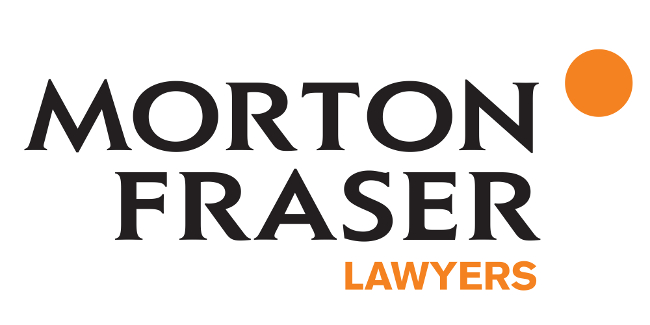Sandra Cassels: Cladding in Scotland

Sandra Cassels
Sandra Cassels provides an overview of the approach to cladding in Scotland and addresses three discrete points: building Regulations, RICS Guidance and rights of recourse for owners/government assistance.
Building Regulations
The fatal Garnock Court tower block fire in 1999 contributed to the building standards system being established. The Building (Scotland) Regulations 2004 provide guidance as to what cladding can be used for any particular building. The Regulations are supplemented by annually updated Building Standards Technical Handbooks which provide guidance on achieving the standards set out in the Regulations.
The key requirement is that buildings are designed to inhibit the spread of fire in cavities, on the external walls and between neighbouring buildings. This is more onerous than its English counterpart which requires, inter alia, that the external walls “adequately resist” the spread of fire.
In addition to these robust requirements, fire resistance standards were introduced in October 2019 which require any Scottish building over 11 metres to have non-combustible cladding. Previously only buildings over 18 metres (the historic reach of firefighting equipment) were required to comply with this standard.
RICS Position
An EWS1 assessment is now required to value and lend against a property with cladding. The EWS1 confirms that a residential building’s cladding has been assessed by a suitable expert and records whether the cladding is combustible and if so, if remedial work is necessary to reduce the fire risk.
RICS issued guidance in March 2021 intended to clarify what properties will require an EWS1. This was likely prompted by the conflicting approaches taken by lenders as to whether properties required an EWS1 or not. From 5th April 2021 an EWS1 is required for:
- A 6+ storey building with cladding/curtain wall glazing and/or balconies stacked vertically above each other and the balustrades, decking or linking is constructed with combustible material.
- A five or six storey building where:
- At least one quarter of the building elevation is covered in cladding, or
- ACM, MCM or HPL panels have been installed, or
- There are balconies meeting the same requirements as above.
- Buildings four or fewer storeys where ACM, MCM or HPL panels are installed.
Research by the Herald on Sunday found that there are at least 974 buildings in Scotland requiring an EWS1. This figure includes over 200 council buildings, including schools, with HPL panels. In addition, 23 tower blocks have combustible ACM panels like those seen at Grenfell.
Government assistance
Many owners have found their properties requiring expensive remedial work with no recourse to insurance policies or against the seller/developer/builder as the cladding was compliant with building regulations at the time of construction. On the face of it, owners will have to bear the cost of identifying and carrying out remedial work. With this in mind, both the UK and Scottish governments announced plans to tackle unsafe cladding. As of January 2021, the Scottish government had received £97.1 million from the UK government to be applied to remedying the cladding problem which it is applying to safety assessments.
Safety assessments
Obtaining an EWS1 can cost around £6,000 and there are few people qualified to provide this service. Accordingly, the Scottish government are providing free safety assessments to properties with external cladding, known as the ‘Single Building Assessment’ (SBA). Inspections commenced in August 2021 on the 25 highest risk buildings.
The SBA comprises an external wall appraisal and broad fire risk assessment of the whole building (not solely focused on cladding). It is intended to provide a realistic view of how much work is required to make buildings safe. It is expected that buildings with safe cladding will be ‘green lighted’ to provide reassurance to owners and occupiers.
Government guidance
The Scottish government has published an advice note on fire risk posed by cladding in multi-storey residential buildings. Part 1 contains general advice directed towards those responsible for fire safety such as owners and building managers, including a flowchart showing when an assessment or remedial work is required. Part 2 contains technical advice for those carrying out fire safety risk assessments.
What next?
For owners and occupiers of potentially unsafe buildings in Scotland, it is positive that the necessary safety assessments will be funded by the Scottish government however it remains to be seen who will fund remedial works. This is in contrast to the position in England & Wales where the UK government has proposed to pay for the removal and replacement of unsafe cladding in England on high-rise residential buildings which exceed 18 metres. In January 2022, the UK government also set out a new plan for building safety which, amongst other things, extended protection to Leaseholders living in their own flats over 11 metres tall meaning that the Leaseholders will no longer have to cover remediation costs themselves. Under this new plan, developers and cladding companies have been given two months to agree a plan of action to fund remediation costs. Should the industry fail to come up with a solution, the UK government has advised that they will impose one on them.
There have been hints that the Scottish government will look to developers/the construction industry to contribute to the cost of remedial works if these cannot be met by public funds. Given that housebuilders have already indicated that they will reduce construction, particularly affordable housing, due to the cost of building safety repairs it is highly unlikely that they will voluntarily contribute. In the absence of agreement, the Scottish Parliament would need to pass legislation requiring such payment. This is unlikely to be a popular policy and can expect to meet fierce resistance. In addition, such legislation would require to be carefully and narrowly drafted otherwise it is likely to result in costs being passed down the supply chain which will simply cause further economic difficulties for firms already struggling with the cost of materials and lack of labour following Brexit and the pandemic.

Sandra Cassels is a partner at Morton Fraser. This article forms part of Morton Fraser’s annual Litigation in Scotland report.























